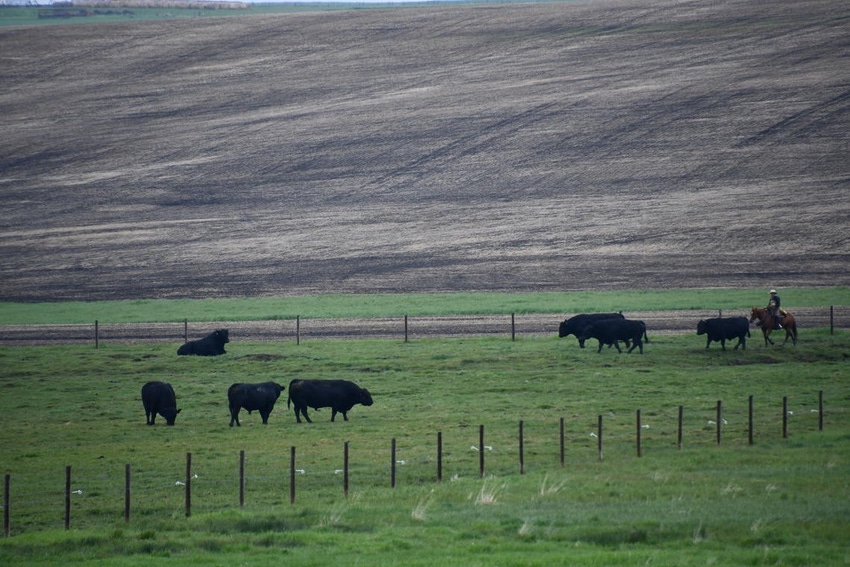Study looks to improve breeding bull health, productivity
Canadian researchers seek to figure out what bulls do all day and how that may influence animal welfare and producer profitability.
July 15, 2020

For the past few summers, Drs. Ed Pajor and Jennifer Pearson with the University of Calgary in Alberta worked behind the rodeo chutes at the Calgary Stampede, studying the daily routine of bucking bulls in order to identify where injuries might occur and to improve animal welfare.
This year, the researchers are studying beef breeding bulls at W.A. Ranches, the University of Calgary’s 19,000-acre cow/calf operation near Cochrane, Alb.
Pearson, a veterinarian and postdoctoral fellow, and Pajor, a professor of animal behavior and welfare in the Faculty of Veterinary Medicine and director of W.A. Ranches, have a mission: to figure out what bulls do all day, according to an announcement from the University of Calgary.
Cattle have their own social networks, the researchers said, noting that during the non-breeding season, bulls are often kept together in paddocks, where they form relationships and develop social hierarchies.
“Some will spend more time with one animal or several animals -- a friend, a buddy to hang out with,” said Pajor, who holds the Anderson-Chisholm chair in animal care and welfare.
Bull surveillance
When bulls are separated into smaller groups and moved out to different grazing locations with herds of cows, the social dynamic changes, the researchers said. By using a radio collaring system to track the animals, the researchers will study changes in their movements and activities. Global positioning system (GPS) technology is especially useful when bulls are turned out on large lease lands, where it’s not otherwise possible to monitor them multiple times throughout the day.
“We can download that data once a week from bulls on pasture, and it gives us an understanding of how they spend their time, where they spend their time [and] who they spend their time with,” Pajor said.
GPS tracking collars have been used to study other animals, including wildlife, and they work quite well. Pajor said this is the first such project with beef bulls, and “fitting the collars was challenging because those other animals actually have necks.”
Distinguishing lovers from fighters
Pajor said of particular interest is to find out what happens when bulls unfamiliar with each other are put together during breeding season.
“Those animals may spend a lot of time fighting, a lot less time breeding and lose more condition because they're spending so much energy fighting,” he said. “They will likely be less successful in terms of breeding, and they may get injured more often, because they're spending more of their time fighting.”
Pearson added that the team wants “to see if we can use this technology to better understand what a bull is doing and how he interacts with other bulls to help promote better health. If a bull is sick or injured, then potentially we could use this technology to help identify that bull before we might be able to see it."
The research will combine tracking surveillance with direct observation and video recording of bulls in closer proximity.
Many people think of bulls as highly active animals that exhibit a lot of aggressive behavior, but Pearson said that hasn’t been her experience. “That's not what we've seen either at the [Calgary] Stampede or with our beef bulls. The majority of them spend most of the day lying around chewing their cud, kind of relaxing.” Pearson is interested to find out how each bull’s behavior translates into the number of calves it produces.
“I want to see how these bulls interact with each other and if some of their interactions and activities might indicate which ones are going out and breeding more cows and siring more calves than other bulls who maybe aren't doing their job as much,” she said. Just how well an individual bull does his job will be traced by DNA testing offspring after next year’s calving season.
Animal welfare, bottom line
“Another component is that by understanding the behavior of the animal prior to going out to pasture, it also will open up new research questions about the management of those animals and how we can manage them better to improve their welfare and their health before going out to pasture,” Pajor added.
Pearson said the Anderson-Chisholm family’s gift of W.A. Ranches offers an incredible opportunity to study bulls and use new technologies to help better understand the animals.
“Investing in good, fit bulls is really important to a cow/calf producer,” Pajor said. “We're pretty excited to be doing research that can help them make good management decisions that can also reduce injuries and improve welfare. There are potentially some pretty important economic impacts from the type of research we’re doing.”
You May Also Like



